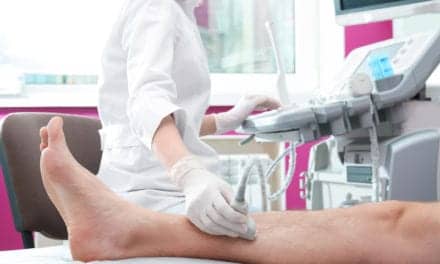 |
At the University of Michigan Hospitals, Ann Arbor, we have seven CT scanners in our 900-bed facility, so patient throughput is very important. In August 2004, we conducted 6,000 examinations in our CT area, where the use of polymer contrast packaging has been a real advantage. We have dual injectors with a saline push, so we can use less contrast, which is a money saver. The injectors’ spikes stay sterile between patients, permitting us to supply contrast for multiple scans from the same large-volume bottle. The container is opened easily using a pull tab, the spike is inserted, and the unit is then hung on an intravenous (IV) pole.
Based on patient-care needs, we use different types of contrast. We can have the various contrast packages ready, hanging on an IV pole along with the saline. Next we simply hook up the injectors, preprogram them, and set up the room for the next patient. This is a great throughput enhancer for us, and an improvement in patient services.
We were delighted to see the end of using glass contrast bottles, especially their metal pull tabs. Not only did the metal crimps cause cuts, but they often became stuck, so we used scissors, hemostats, or other inappropriate tools that came to hand to try to pry them off the bottles. We were also unable to save contrast from open bottles, so any contrast remaining in the bottle was wasted after an examination. Contrast in the new polymer packaging not only has a 3-year shelf life, but it can be used for up to 8 hours (pharmacy bulk package) after the spike has been inserted. We keep indelible markers in all of the examination rooms, and we use them to write the date and time that the bottle was spiked directly on the polymer bottle, so there can be no confusion as to how fresh the contrast is. We typically use a full 500-mL container every 1.5 hours during the day. At night, when fewer studies are performed, we can rotate the open contrast containers through the examination rooms until they have been used completely.
Storage space is also a problem for us, so we only carry the 500-mL bottles of contrast. Every spare inch in our hospital has already been taken for some purpose other than storage, so being able to stock only one size in our department has been very helpful to us in making the most of our limited storage space.
For documentation purposes, we routinely use the peel-off labels that are supplied on the side of the polymer container. Because we use so many different types of contrast, we find it helpful to put these labels right on the imaging requisition. This way the radiologist who interprets the images can easily indicate, while dictating the report, what type of contrast was used for the examination. We also keep a matching label in our logbook of patients, so we can look back to see what type of contrast an individual patient had been given previously (in case it was not documented). Contrast reactions are infrequent, but the log lets us track the lot number of the contrast medium in case an adverse reaction should occur.
The reaction of the staff to the introduction of the new contrast packaging has been very enthusiasticso enthusiastic, in fact, that we were forced to hide the polymer bottles so that our remaining stock of contrast in glass bottles would be used. Once the polymer bottles were available, no one wanted to use the remaining glass bottles any longer.
The new contrast containers are very well designed; not only are they lighter than the glass bottles, but they are also easier for the technologist to grip. We have 35 technologists in the CT department, so we do not usually expect to achieve consensus among them. But they all love the ease of use and convenience provided by the polymer contrast bottles.
Suzanne D. Goncalves, BS, RT(R), (CT), is CT lead technologist, University of Michigan Hospitals, Ann Arbor. This article has been adapted from Opening Polymer +PlusPak Packaging vs Glass Bottles, which she presented at the Polymer Bottle Safety Focus Group on September 10, 2004, in Las Vegas.





